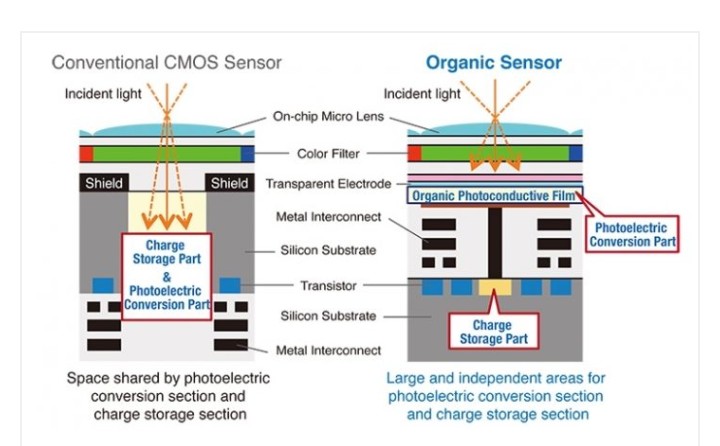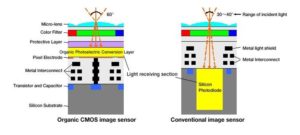
Organic Image Sensor: next gen
Sep 15 2019
Digital film making became standard for capturing moving images when Image sensor size got bigger and equivalent to 35mm motion picture film,that was possible from shift from ccd to cmos.
Now Fuji film and Panasonic had jointly developed a new image Sensor that is termed as Organic Cmos Image Sensor which is going to set new standard in Imaging Industry.
It has lots of advantages over conventional cmos sensor which is in current use.
ORGANIC IMAGE SENSOR

conventional image sensor consists of a silicon photodiode for capturing light, metal interconnect, color filter and on-chip micro-lens. The newly-developed organic CMOS image sensor technology uses organic photoelectric conversion layer with high absorption coefficient instead of the silicon photodiode, reducing the thickness of the light receiving section down to 0.5 microns.
Since the conventional silicon photodiode measures at least 3 microns in depth, the range of incident angles was limited to around 30 – 40 degrees. The thin film, achieved with the organic cmos image sensor technology, has enabled the expansion of this range to 60 degrees, efficiently utilizing light entering at an angle for faithful color reproduction with no color mixing.

Fujifilm’s organic photoelectric conversion layer technology with Panasonic’s semiconductor device technology to jointly develop an organic CMOS image sensor that outperforms conventional image sensors. The new organic CMOS image sensor offers the industry’s highest dynamic range of 88dB, advanced sensitivity 1.2 times more sensitive than conventional sensors.
Panasonic new 8k camera which will have organic cmos sensor.
On flip side organic sensor may tend to use more power that will lead to draining batteries soon.
It will be interesting to see how camera manufacturers counter the power consumption part.
Many market survivers indicate that organic cmos sensor will take 20 percent of share when it is on roll.
CJ Rajkumar
Author/Cinematographer
